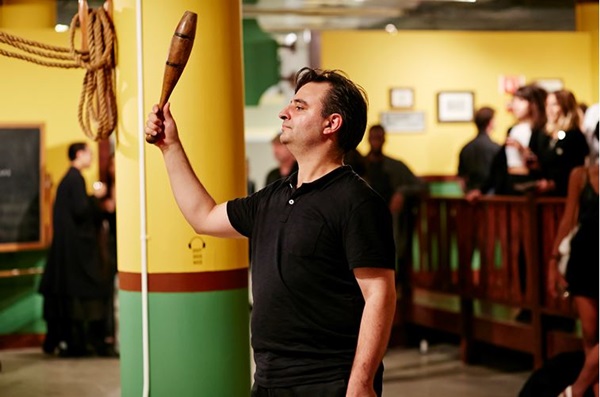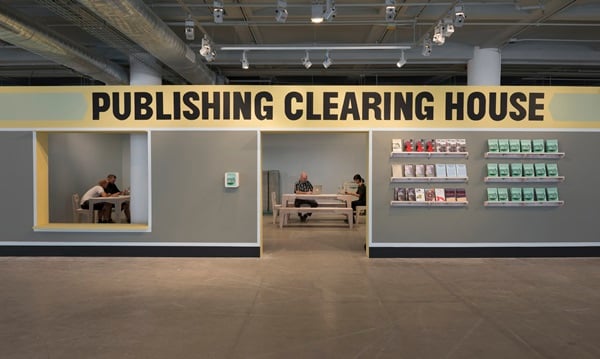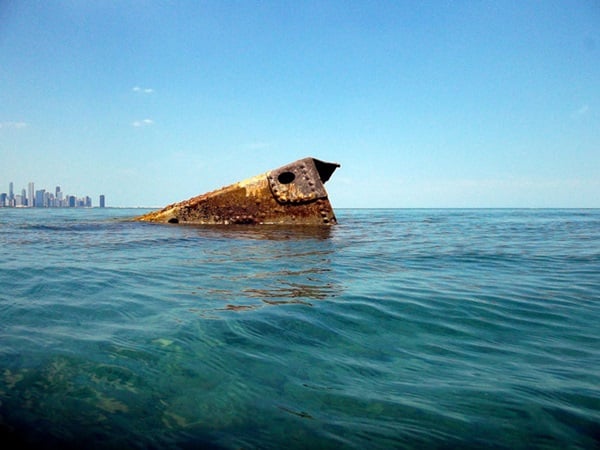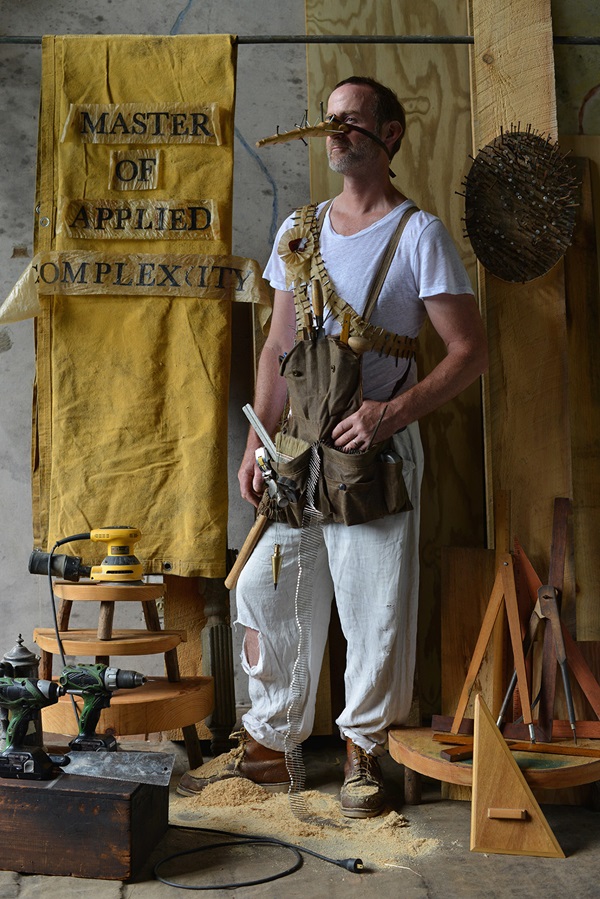Art & Exhibitions
“A Proximity of Consciousness” Celebrates Art and Activism in Chicago
The Second City comes first in social practice.

The Second City comes first in social practice.

Christian Viveros-Fauné


Temporary Services, Publishing Clearing House (2014). Installation view of “A Proximity of Consciousness: Art and Social Action,” Sullivan Galleries, Chicago.
Photo: Courtesy James Prinz.
Among the current art buzzwords that accompany seemingly unrelated phenomena like regularly shattered auction records, the worldwide explosion in the billionaire population (from 793 in 2009 to 1,645 in 2014), growing income inequality (in the U.S. the top 1 percent of earners earn as much as the bottom 50 percent), and soaring ticket prices at art museums like the Art Institute of Chicago ($23 for an adult, $17 for seniors and students), there is one that inspires growing contrarian heat—social practice, a.k.a. socially engaged art.
Once mostly a Grove Dictionary of Art glossary entry, the term has recently spawned proliferating exhibitions and symposia from Havana to Helsinki. The latest, “A Proximity of Consciousness: Art and Social Action,” is currently on view at Chicago’s School of the Art Institute. Part of a larger two-month long SAIC programming initiative called “A Lived Practice,” the show features an expanding art movement that appears to be steadily gaining greater institutional and commercial support. Like everything else today, social practice is global in scope. Yet the phenomenon fundamentally manifests itself locally—as the show’s curator, Mary Jane Jacobs, points out. If Chicago has long been ground zero for socially engaged art, “A Proximity of Consciousness” literally brings that idea home.
A show of 10 large-scale commissioned works by artists Jim Duignan, Pablo Helguera, Iñigo Manglano-Ovalle, Dan Peterman, alt-historians Pocket Guide to Hell, J. Morgan Puett, Michael Rakowitz, “legislative artists” Tamms Year Ten and Laurie Jo Reynolds, the art collective Temporary Services, and Rirkrit Tiravanija, the exhibition illustrates the bourgeoning influence of what UCLA art historian Miwon Kwon has called “art in the public interest.” Unsurprisingly, more than half of the artists are SAIC alumni. “Social practice has been fundamental to the Chicago arts scene for more than 100 years,” Jacobs told the Art Newspaper, invoking the example of Jane Addams’s pioneering social work at Hull House (now a city museum), John Dewey’s writing on school reform, and the lasting impact of Chicago’s labor movement. According to Jacobs, in Chicago at least “socially engaged art practice is not taken as a passing art style.”

Pablo Helguera, Addams-Dewey Gymnasium (2014). Installation and performances in “A Proximity of Consciousness: Art and Social Action,” SAIC Sullivan Galleries, Chicago.
Photo: Courtesy Tony Favarula.
A show of complex installations presented at SAIC’s seventh floor Sullivan Galleries, the exhibition covers a football field’s worth of floor space with what are mostly interactive, participatory works. Among these are Michael Rakowitz’s Every Weapon Is A Tool If you Hold It Right (grilling tools made from Iraqi and American bayonets and a carp tank filled with live fish are transformed into a restaurant project specializing in the Iraqi delicacy masgouf), and Pablo Helguera’s Addams-Dewey Gymnasium, a working 19th century fitness center that features period barbells and medicine balls, along with the antique ethos of mens sana in corpore sano.
Other works, like Iñigo Manglano-Ovalle’s Seven Thousand Cords (After Beuys), present social engagement in the guise of minimal sculpture. Seven cords of wood that directly reference Joseph Beuys’s Documenta 7 installation Seven Thousand Oaks, the piece stacks up mounds of split firewood along with the German artist’s flourishing influence. (Also on view concurrently in the modern wing of the Art Institute is Beuys’s Untitled (Sun State), 1974, a chalkboard created during an original lecture-performance at SAIC.)

Silver Spray shipwreck at Morgan Shoal.
Photo: Courtesy Dan Peterman.
“A Proximity of Consciousness,” in fact, incorporates various kinds of social practice, some of which use different parts of the engagé toolbox to get their point across. Dan Peterman’s Morgan Shoal: Lake Bottom Land Use, for example, uses straight documentary video, photography and maps to illustrate an ongoing activist campaign to save a local ecosystem from city development. J. Morgan Puett’s winsome costume-drama display, on the other hand, employs film, photography, and period fashion to reinterpret the importance of John Dewey’s philosophical writings and the lasting clout of Jane Addams’s Hull-House. As artworks, they could not be any more different. The first is a modest but effective presentation full of socio-political content; the second is nearly impossible to fathom despite its vintage good looks.

“The Labor Portraits,” Rebecca Purcell with J. Morgan Puett/Mildred’s Lane. Courtesy of Mildred’s Lane and Rebecca Purcell.
Photo: Courtesy Jeffrey Jenkins.
But if the pitfalls of exhibiting social practice in a conventional art space are fully on view in this pioneering show, so are the rewards. Nowhere is this more evident than in Tamms Year Ten and Laurie Jo Reynolds’ Tamms Year Ten Family Room. A living room and meeting place cobbled together from the homes of men formerly incarcerated in an Illinois supermax prison, the parlor also acts as a staging ground for a live activist campaign charged with powerful symbolic value. The prison was closed in 2013, thanks largely to the efforts of these artist-activists—making clear, among other tertiary developments, the power of connecting artwork to a specific social good. Few other pieces in this show or any other are capable of demonstrating art’s potential to orchestrate real, bona fide social and political change.
“A Proximity of Consciousness: Art and Social Action” is on view at the Sullivan Galleries, School of the Art Institute of Chicago, through December 20, 2014.